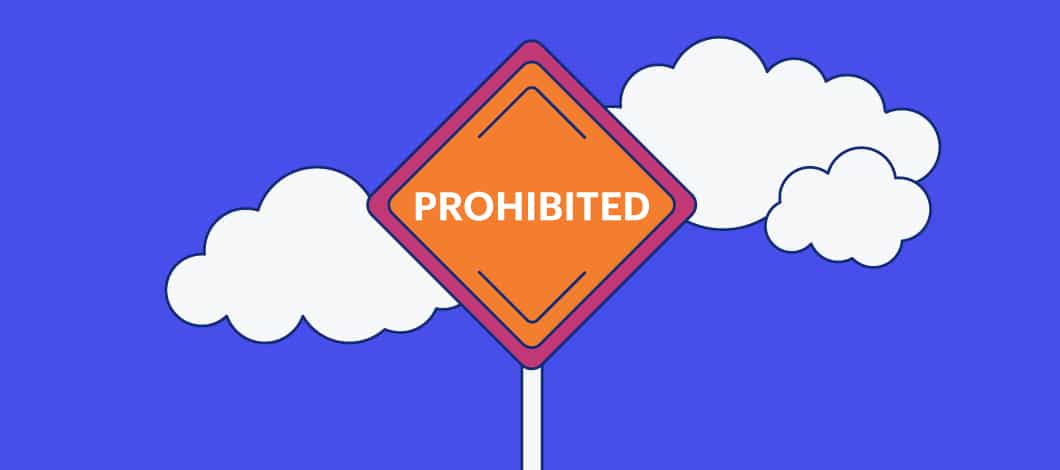Rollovers as business startups (ROBS) let you use retirement savings for business financing. Here’s how to use ROBS for funding a new venture:
- Set up a C corporation
- Create a corporate retirement plan
- Transfer personal retirement funds to your corporate retirement plan
- Purchase stocks in your corporation
- Use your stock purchases to finance your new venture
- Observe ROBS maintenance and compliance requirements
We’ll walk you through these steps. We’ll also cover:
- What a ROBS is
- How it works
- The pros and cons of using a ROBS
- How to qualify for one
- How to unwind one if you end ownership of your business
Read on to learn what you need to know about using a ROBS to finance your new business.
What Is a ROBS?
A ROBS is a method of financing a new company by tapping into a retirement savings account. A ROBS arrangement is classified as a rollover, meaning that funds are transferred from one retirement plan into another without incurring normal withdrawal or tax penalties.
With a ROBS, funds get transferred from one or more personal retirement plans to a corporate 401(k) plan or other qualifying retirement plans. What distinguishes ROBS from other rollover arrangements is that the transferred funds go toward financing business venture startup costs.
ROBS vs. Employee Stock Option Plans (ESOPs)
ROBS are distinct from another type of financing arrangement known as an ESOP. A ROBS and an ESOP are actually very different, but people sometimes confuse the two. What they have in common is that under both types of plans, employees may invest in the company.
A ROBS typically uses a 401(k) plan or an equivalent as the investment vehicle. An ESOP, however, uses a trust fund entirely funded by the company or by loans from a financial provider. Additionally, ROBS investments go toward financing startup costs, whereas with an ESOP, shares get allocated to employee retirement accounts. The purpose of a ROBS is to finance a new business, whereas the purpose of an ESOP is to offer employees an incentive.
How Does a ROBS Work?
ROBS financing works by drawing on personal retirement savings to purchase company stock.
A ROBS requires you to create a C corporation with its own retirement plan, typically a 401(k) plan. You can then transfer funds from your personal retirement savings or that of other contributing employees to your corporate retirement plan.
The funds in the corporate retirement account are used to buy company stock, providing financing for business expenses.
Prohibited Uses of ROBS
To discourage abuses, the Internal Revenue Service (IRS) has excluded ROBS from being used for certain prohibited transactions. These fall into a few main categories:
- Promoter fees
- Personal use of business property
- Excessive owner compensation
Make sure you don’t use ROBS funds in ways which are prohibited in any of these categories.
Promoter Fees
Issues concerning promoter fees can arise when business owners rely on ROBS providers or other professionals to help set up a ROBS arrangement. Under certain circumstances, such a professional may qualify as a fiduciary, meaning a person who exercises some type of discretionary influence over a financial plan through means such as providing investment advice for a fee or exercising administrative authority.
Under IRS Code Section 4975, a fiduciary is prohibited from dealing with the assets of a plan in their own interest or their own account. This regulation discourages conflicts of interest and protects business owners from being exploited by unscrupulous providers who might provide advice designed to profit themselves. It also discourages business owners from running scams in collusion with conflicted advisers.
Personal Use of Business Property
Other regulations similarly discourage business owners from misusing ROBS arrangements for personal profit. If you’re using a ROBS rollover, you can’t use any business property for personal use, and you can be taxed at a 15% rate for any company property sold, leased or exchanged to a disqualified person, such as the business owner or their spouse or family.
Excessive Owner Compensation
You also can’t use your ROBS funds to compensate yourself excessively at the expense of your company’s retirement plan. You cannot give yourself excessive compensation and benefits. You can’t reduce your retirement account ownership by using stock options. You can’t pay yourself out of your retirement plan, but must pay yourself out of operating expenses.
If you qualify as a highly compensated employee (HCE), meaning that you own more than 5% of the business or receive more than $125,000 a year if the preceding year is 2019 (it’s $130,000 for 2020), any compensations or benefits you receive from your 401(k) must not favor you in a way which discriminates against other employees.
To enforce these regulations, the IRS may audit companies using ROBS financing. If you decide to use ROBS funding, be sure to avoid prohibited uses of funds and to maintain your financial records in case you get audited.
ROBS Pros and Cons
Using a ROBS offers several attractive advantages, chiefly the ability to finance your startup without interest payments or withdrawal penalties. But it carries potential drawbacks, too, most notably risking your retirement savings.
Consider these pros and cons carefully before deciding whether to go with ROBS financing.
The Pros
- The biggest pro of using a ROBS is that you’re financing your business with your own savings, so you don’t have to pay debt repayments or interest as you would with a loan. You likewise avoid the early withdrawal penalties you would normally incur by tapping into retirement savings. This leaves your business with more cash on hand than types of financing where you would have to make payments, increasing your company’s prospect of surviving the startup phase.
- A ROBS is easier to qualify for than many types of financing. Since your savings cover the funding, you don’t have to pass a credit check or offer collateral. You don’t have to risk having personal assets seized if you default on payments.
- When you deposit ROBS funds into your company’s retirement account, the fund can grow just as any other retirement fund. It enjoys the save tax advantages as a regular retirement fund.
The Cons
- The biggest risk of using a ROBS is that you’re risking your retirement savings on the success of your business. Before using a ROBS, consider whether the money you’re risking might be better invested in a less risky profit venture such as traditional investment vehicles.
- A ROBS increases your risk of being audited by the IRS, which keeps a sharp lookout for potential abuses of this type of financing. If you plan to use a ROBS, be sure that you are prepared to take necessary steps to remain in compliance, and that you maintain the necessary records you will need in the event of an audit.
- A ROBS can also present some potential administrative inconveniences. You have to structure your company as a C corporation. You also have to administer a retirement plan. If you’re not experienced with these tasks, you will most likely need to hire professional help. Be prepared to take on these extra administrative chores or to hire someone to do so if you plan to use a ROBS.
How Do You Qualify for a ROBS?
To qualify for ROBS financing, you must meet 4 main requirements:
- You must currently own an eligible retirement or pension plan from a prior employer (rollovers from current employers are not allowed by most employers)
- Your plan account must contain at least $50,000
- Your business must be structured as a C corporation
- You must be an employee of your business receiving a salary
Eligible plans include:
- 401(k) plans
- Conventional individual retirement accounts (IRAs) but not Roth IRAs
- 403(b) plans
- Keogh plans
- Thrift savings plan (TSP) plans
- Simplified employee pension (SEP) plans
If you meet these criteria, you should qualify for ROBS financing.

How Do You Set Up a ROBS?
Setting up a ROBS essentially involves setting up a C corporation with a retirement plan, transferring funds from your existing retirement plan to the new plan and then using the new plan to purchase stocks in your C corporation. The revenue from stock purchases goes toward financing your business expenses.
You also must follow certain procedures to maintain your plan and remain in IRS compliance. If you need assistance implementing these steps, you can seek help from a ROBS provider or other financial professional.
You can expect to incur a fee for setting up your C corporation and retirement plan as well as ongoing monitoring of your plan’s administration. You will also incur expenses for any help from tax professionals required to meet your plan’s tax obligations.
1. Set up a C Corporation
To set up ROBS financing, you must first create a C corporation. The reason you need a C corporation is that the IRS tax code defines certain prohibited transactions which prevent other types of business structures from selling shares to retirement accounts. If you own a business which is not currently structured as a C corporation, you can convert it to a C corporation to qualify for ROBS financing.
2. Create a Corporate Retirement Plan
Once you have your C corporation set up, the next step is to create a corporate retirement plan. A 401(k) is normally used, but several other types of plans may qualify. Examples of qualifying plans include:
- 401(k) plans
- Defined contribution plans
- Defined benefit plans
- Profit-sharing plans
- Combinations of plans, such as a 401(k) plan with profit-sharing features
Your plan’s investments must be handled by a qualified custodian, as with any other retirement plan. ROBS providers normally do not handle this, but can help you find a qualified party.
3. Transfer Personal Retirement Funds to Your Corporate Retirement Plan
Once you have a corporate retirement fund set up, you can roll over funds from your personal retirement account to the fund. How long this process takes will depend on the policies of the provider administering your corporate plan.
4. Purchase Stocks in Your Corporation
Once your corporate retirement plan has been funded, you can use the funds to purchase stock in your corporation. To do this, you must issue ownership shares. The amount of shares issued will correspond to the percentage of startup funding you’re financing with the fund. Depending on your financing strategy, you may wish to issue 100% of shares during your initial round of funding or to hold back some shares for possible issuing at a later date. Your ROBS provider or financial advisor can offer guidance on what amount of shares to issue.
5. Use Your Stock Purchases to Finance Your New Venture
After you have purchased stock, the funds raised by the stock purchases become available to your startup. You can use the funds to fund your business expenses.
Remember that when you use ROBS funding, you cannot engage in the prohibited activities mentioned earlier. For instance, you could not have your corporation buy a building and then sell the building to yourself or a family member.
6. Observe ROBS Maintenance and Compliance Requirements
Once your ROBS arrangement is set up, you must take administrative steps to maintain it and meet regulatory compliance requirements. You must administer your company’s retirement plan. Compliance regulations require you to offer eligible employees the opportunity to invest in the plan.
Eligibility requirements vary based on your state and your plan’s design. All employees investing in the fund must be actual employees who work at least part-time for your company. You can’t discriminate against employees who are not HCEs. Once employees invest in the fund, you must administer their contributions and comply with tax obligations.
You must file an annual IRS Form 5500 to advise the federal government of your plan’s assets, expenses and activities. Meeting these obligations can be complex, which is why it is advisable to rely on a ROBS provider or another experienced professional.
How Do You Unwind a ROBS?
Using ROBS financing places you under certain obligations in the event you decide to sell your business or declare bankruptcy for your company. There are several possible ways you can unwind a ROBS under these scenarios.
The easiest way to unwind a ROBS is to sell the stock in your business. In this case, all other stockholders receive their share of the sales proceeds, minus any expenses involved in winding down your investment or meeting other obligations. The funds received by the retirement fund for its stock sales then roll into an IRA with you as the beneficiary.
Another unwinding scenario is when your business sells its assets instead of its stock. This protects the company’s new owners from responsibility for liabilities. In this case, funds from asset sales must first go towards paying off liabilities and administrative obligations. Any proceeds left over, including your corporate retirement plan, then get distributed to the company’s owners.
A third scenario is when your company fails and you declare bankruptcy. In this case, you are required to advise your employees on options for what they can do with funds they’ve invested in your retirement plan. You don’t have any repayment obligations for your original funding, but you will lose the investment. This is one reason why you should weigh your options and risks carefully before deciding to go with a ROBS arrangement.
Finance Your Business to Fuel Your Success
A ROBS can be one effective way to capitalize on your new business if you need financing, but it is not without risks. If you don’t want to tap into your retirement savings, or if you want to supplement your ROBS with other sources of financing, you should consider other funding options.
Business loans, lines of credit, merchant cash advances and accounts receivable financing are a few other ways you can finance a startup. Review all your funding options before deciding whether or not a ROBS is the right financing solution for you.












